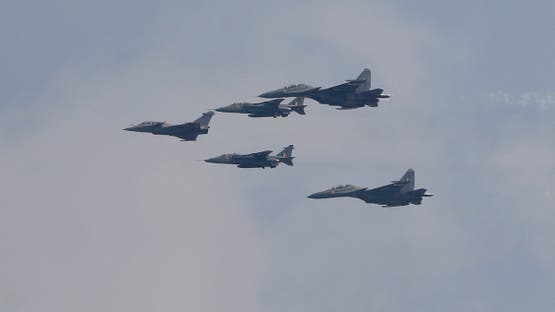In a significant escalation of hostilities between two nuclear-armed neighbors, the Pakistan Air Force (PAF) reportedly shot down an Indian Dassault Rafale fighter jet on the night of May 7, using Chinese-made J-10C multirole jets equipped with PL-15 long-range missiles. The strike marked the first known combat loss of a Rafale, a jet widely regarded as one of the most advanced in the Indian arsenal.
The Air Battle of May 7: One of the Largest in Modern History
The confrontation unfolded around midnight, when the PAF detected Indian Air Force (IAF) aircraft activity near the Line of Control. Inside Pakistan’s air operations center, Air Chief Marshal Zaheer Ahmed Babar Sidhu reportedly directed his forces to prioritize targeting the Rafale fighters. What followed was a night-time aerial engagement involving over 110 combat aircraft from both sides—making it the largest such clash in decades.
PAF sources claimed they successfully hit at least one Rafale jet using PL-15E air-to-air missiles launched from Chengdu J-10C fighters. The missiles, launched from nearly 200 kilometers away, reportedly took the Indian forces by surprise, as Indian intelligence had assumed the PL-15’s range to be significantly shorter.
Systems Integration and Kill Chain Advantage
What tipped the scales in Pakistan’s favor, according to military insiders, was not merely Chinese technology, but superior integration and coordination across multiple platforms. Pakistan employed a “kill chain” system that linked radar, satellites, electronic warfare, and aerial surveillance into a unified battle network. This allowed Pakistani pilots to fly with their radars turned off—relying instead on real-time data relayed through secure digital communication channels.
The PL-15 missile, featuring an active radar seeker and a long operational range, was used to maximum effect. Pakistani officials claimed that Indian pilots, unaware of the extended reach of the PL-15E variant, were caught in a vulnerable zone and failed to evade in time.
India’s Response and the Aftermath
In the days that followed, the Indian Air Force launched retaliatory strikes on Pakistani military infrastructure. By May 10, India had reportedly conducted missile strikes on nine Pakistani airbases, radar facilities, and even destroyed a surveillance aircraft on the ground. These counterattacks prompted behind-the-scenes diplomatic intervention from the United States, ultimately leading to a ceasefire agreement that brought the conflict to an end.
However, while Pakistani military sources and recovered missile fragments suggest a Rafale was hit, Indian officials and French defense manufacturer Dassault Aviation strongly denied any losses. India’s Defence Secretary stated unequivocally that no Rafale jets were downed and emphasized that Pakistan’s narrative was inaccurate and politically motivated.
A Shift in Global Perception of Chinese Defense Exports
The encounter has significant implications beyond the subcontinent. It is being seen by analysts as a watershed moment for Chinese defense technology, particularly the PL-15 missile and the J-10C aircraft. Defense analysts noted that global interest in Chinese military equipment could rise sharply, especially among countries that are evaluating high-cost Western alternatives like the Rafale.
China’s state-owned defense firms have already seen a boost in investor interest following the incident, and there is speculation that nations with pending Rafale orders, such as Indonesia and Egypt, might revisit their procurement decisions.
Lessons from the Skies
Experts argue that this confrontation underscores the importance of battlefield intelligence, electronic warfare, and systems integration over pure hardware specifications. Even though the Rafale is considered technologically superior on paper, the operational environment and preparedness of the PAF allowed it to gain the upper hand.
While the facts surrounding the downing of the Rafale remain disputed, the engagement has already entered military history as a key case study in modern air combat—where data fusion, long-range precision weapons, and real-time decision-making are proving to be the ultimate force multipliers.


